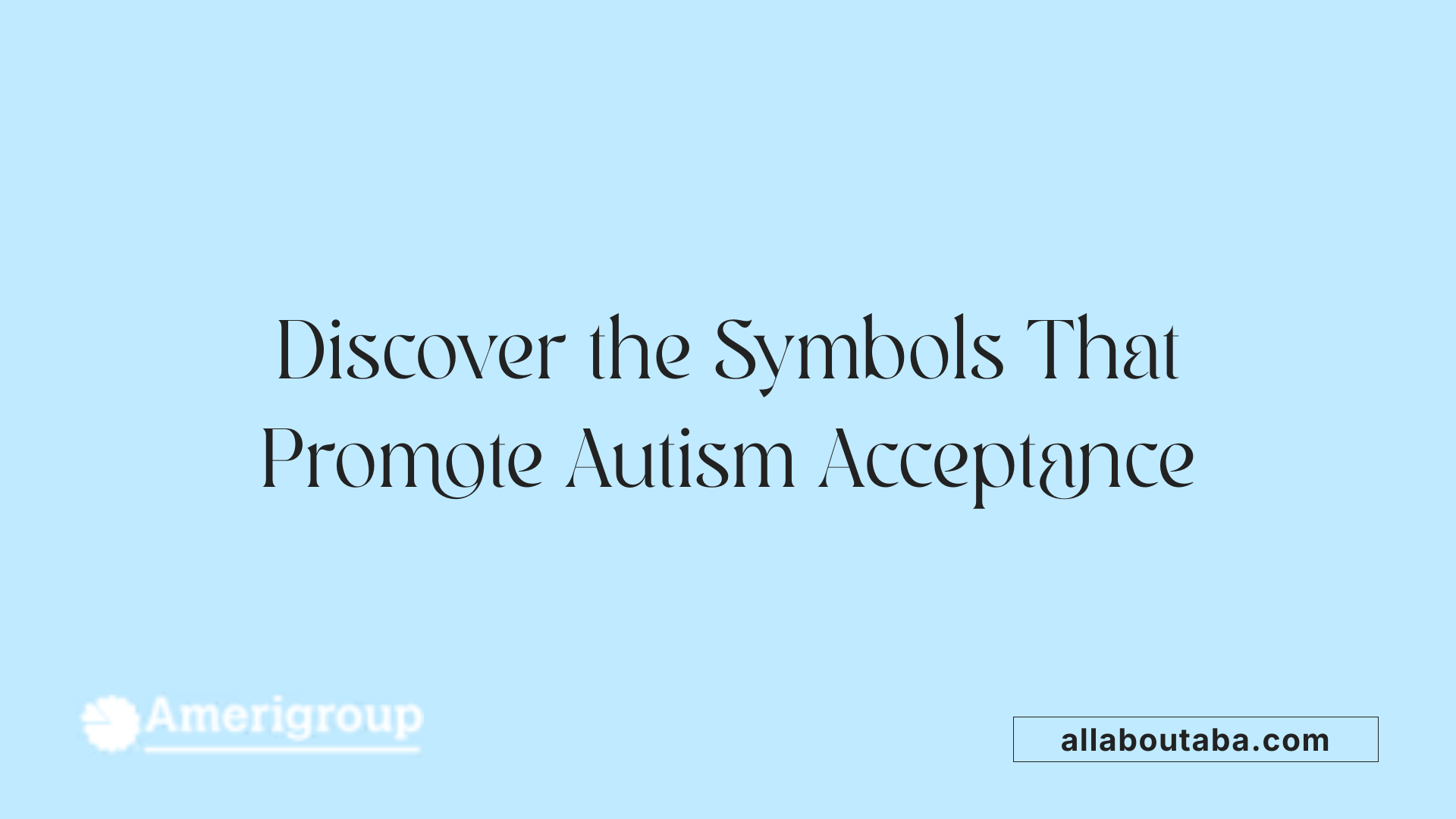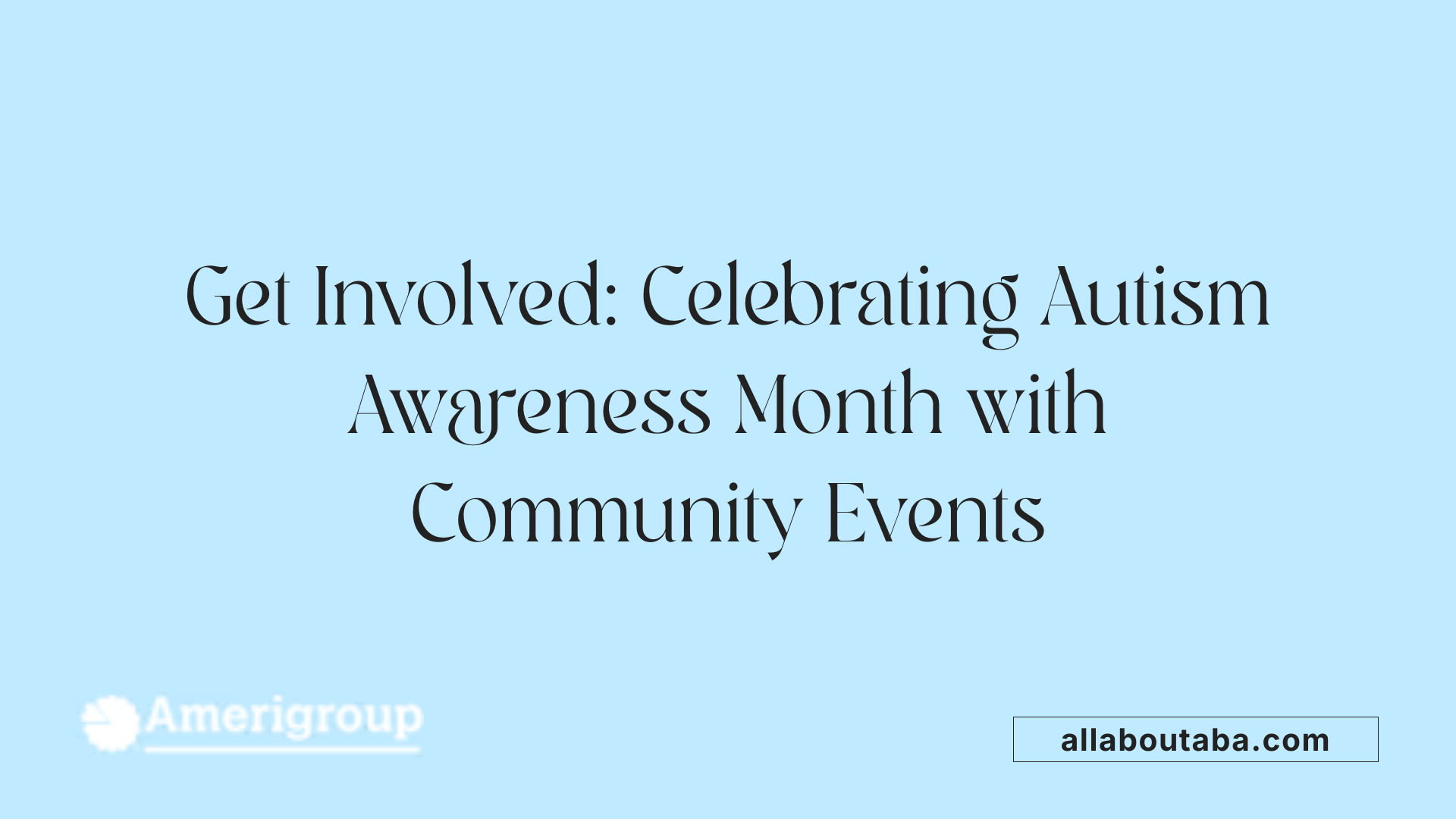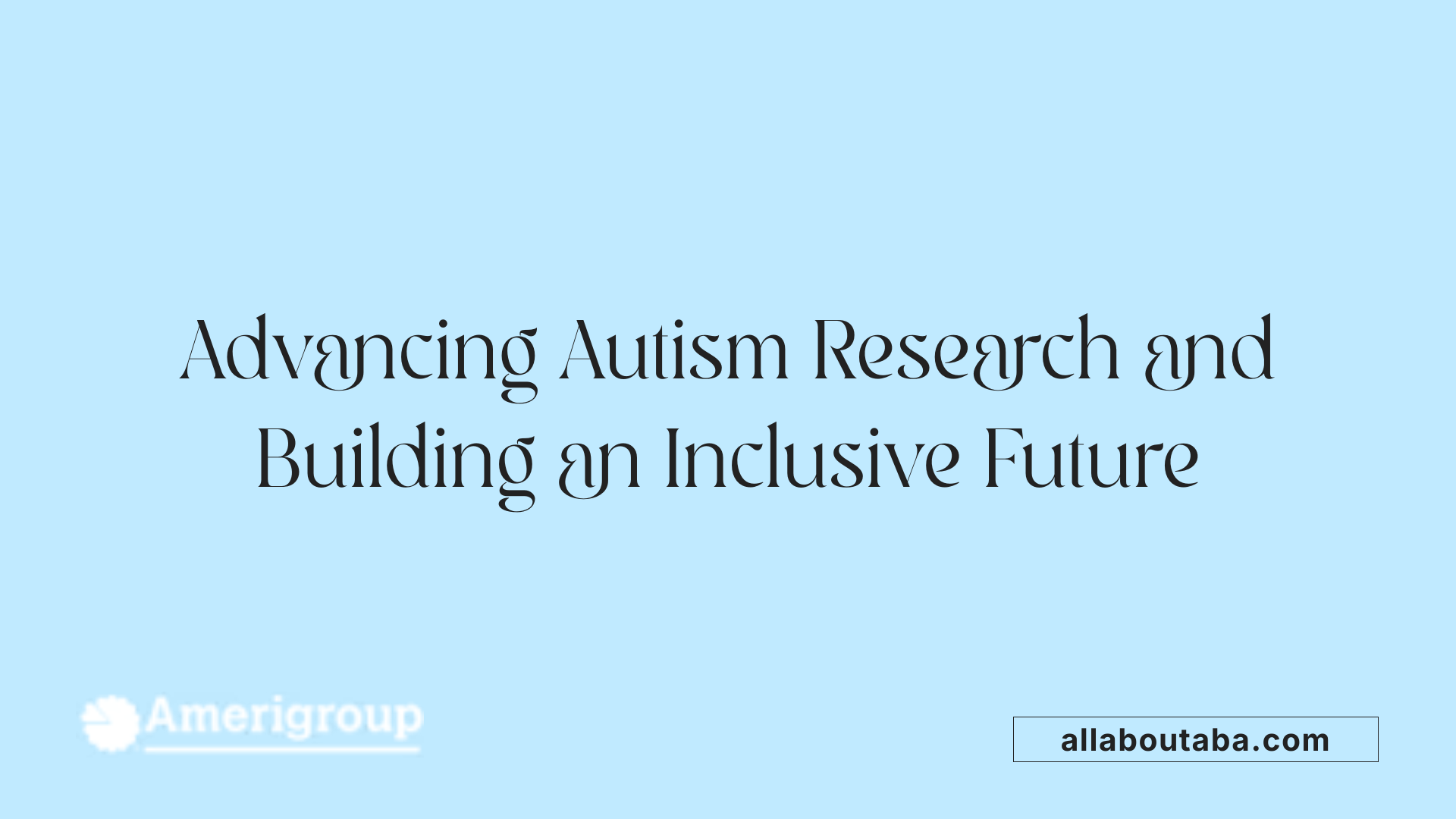Autism Awareness Month
Embarking on a Month of Awareness, Acceptance, and Celebration
April marks a significant time dedicated to recognizing, understanding, and embracing the diverse experiences of individuals with autism through Autism Awareness Month. Rooted in a rich history that emphasizes acceptance over mere awareness, this month serves as a global platform for education, advocacy, and community engagement aimed at fostering inclusive environments where autistic individuals can thrive.
The Origin and Evolution of Autism Awareness and Acceptance
What is the significance of Autism Awareness Day?
Autism Awareness Day, observed each year on April 2nd, holds a vital role in highlighting the importance of understanding autism spectrum disorder (ASD) across the globe. Established by the United Nations in 2007, this day aims to promote a comprehensive awareness of autism, emphasizing the importance of inclusion, acceptance, and support for autistic individuals.
Activities on this day typically include the widely recognized Light It Up Blue campaign, where landmarks and communities worldwide illuminate in blue to show solidarity. Advocacy groups leverage this platform to urge policymakers for supportive legislation, such as the Autism CARES Act, and to foster global conversations about autism challenges and achievements.
Beyond symbolic gestures, Autism Awareness Day functions as a catalyst for education and empathy-building. It encourages societal shifts towards recognizing the talents and contributions of autistic individuals and fostering environments that respect neurodiversity. This day underscores that acceptance extends beyond awareness; it involves actionable inclusion and support, aligning with broader human rights goals.
The Significance of Symbols and Campaigns in Autism Awareness

What are some symbolic items, such as ribbons, associated with Autism Awareness Month?
During Autism Awareness Month, various symbols are used globally to promote understanding, acceptance, and support for autistic individuals. Among the most recognizable are ribbons and logos that encapsulate the movement’s values.
The autism ribbon, often depicted as a puzzle piece, is perhaps the most iconic. The puzzle piece was first introduced in 1963 by the National Autistic Society. Its multicolored design symbolizes the diversity and complexity of autism. The puzzle pattern reflects the idea that every individual with autism is a unique piece of a larger picture.
Another prominent symbol is the infinity loop ribbon, which signifies endless possibilities, continuous acceptance, and the neurodiversity movement. This symbol emphasizes that autism is a lifelong condition but also a source of strength and talent.
The blue ribbon, linked closely to the 'Light It Up Blue' campaign launched in 2010 by Autism Speaks, quickly became a hallmark of autism awareness efforts. People wear blue as a sign of support to foster respect and reduce stigma.
These ribbons and symbols are versatile—they are worn as pins, jewelry, or displayed during events and campaigns. They serve as visual cues to promote dialogue, understanding, and empathy with the autism community.
Why is blue the designated color for Autism Awareness Month?
Blue has become the signature color of Autism Awareness Month, largely because of Autism Speaks' 'Light It Up Blue' initiative. This campaign encourages individuals, buildings, landmarks, and cities worldwide to illuminate their structures in blue throughout April.
The choice of blue is rooted in its associations with calmness, trust, and serenity—qualities that align with the goals of fostering understanding and acceptance for those with autism. The calming effect of blue helps break down barriers of fear and misunderstanding.
While there is no official or mandated color for autism, blue’s prominence has solidified over the years as a symbol of solidarity, advocacy, and hope. Its widespread adoption by campaigns, organization logos, and awareness events emphasizes the importance of a unified message.
The use of blue, alongside symbolic items like the puzzle piece and infinity loop, helps communicate that autism encompasses a broad spectrum of experiences and strengths. It confirms that autistic individuals are valued members of society deserving respect and support.
The role of symbols in advocacy
Symbols such as the puzzle piece, infinity loop, and blue ribbons are not just visual identifiers; they carry meaningful messages that resonate across individual and community efforts.
They serve to raise awareness, reduce stigma, and promote inclusion. During events like World Autism Awareness Day on April 2nd, landmarks worldwide shine in blue to demonstrate global solidarity.
Organizations and advocates also use these symbols to connect people, organize campaigns, and educate the public about autism. By incorporating these symbols into their messaging, they foster a sense of unity and shared purpose.
In summary, symbols and campaigns like the puzzle piece, infinity ribbon, and Light It Up Blue, play a vital role in shaping the conversation around autism. They help transform awareness into acceptance, ensuring that the autism community is supported, empowered, and celebrated—a goal at the core of Autism Acceptance Month.
Activities and Initiatives During Autism Awareness Month

What activities are usually organized during Autism Awareness Month?
Autism Awareness Month in April features a wide range of activities designed to promote understanding, acceptance, and celebration of neurodiversity. One of the most prominent initiatives is the 'Light It Up Blue' campaign, started by Autism Speaks in 2010, where landmarks, homes, and communities worldwide are lit in blue to raise awareness.
Educational activities are also central, including posting facts about autism on social media, inviting guest speakers, and hosting educational lessons in schools and community centers. Many organizations display books, movies, and artwork that highlight the experiences of people with autism.
Fundraising events are common, such as walkathons, bake sales, yard sales, penny wars, and jeans days that support autism research and local services. Community engagement is encouraged through sensory-friendly events, inclusive play stations, and celebrations that honor autistic voices.
Schools and workplaces often participate with Spirit Weeks, kindness challenges, and awareness campaigns that foster inclusive environments. Additionally, neighborhoods and landmarks are decorated with autism symbols, such as the puzzle piece, which signifies hope and unity. The overall goal is to create an environment where neurodiversity is celebrated, and support systems are strengthened.
What are some suggestions for involvement by the community and individuals?
Community and individual engagement play a vital role during Autism Awareness Month. Simple actions like wearing blue or displaying autism awareness ribbons can visibly show support.
Sharing educational content, personal stories, and positive messages on social media using hashtags such as #AutismAcceptanceMonth, #LightItUpBlue, and #CelebrateDifferences helps spread awareness widely.
Organizing or participating in local activities such as walkathons, pet walks, or awareness fairs can foster community bonds. Schools and workplaces are encouraged to host educational presentations, inclusive activities, and life-sharing sessions with autistic individuals, which help cultivate understanding.
Volunteering with local autism charities, donating funds, or supporting advocacy initiatives are powerful ways to contribute. Advocates can also engage with policymakers to promote inclusive policies, accessibility, and funding for autism services.
Educational efforts like workshops, reading sessions, and inclusive arts projects can further deepen community understanding of autism. Small actions, like inviting autistic individuals to share their stories, can inspire empathy and promote societal acceptance.
Each effort, whether big or small, contributes to transforming perceptions and creating a more accepting society where autistic individuals can thrive.
Measuring Impact and Looking Forward—Building a More Inclusive Future

What are some efforts to track autism prevalence and support ongoing research?
Tracking autism prevalence and supporting research are vital for understanding the condition better and developing effective policies. The CDC's Autism and Developmental Disabilities Monitoring (ADDM) Network plays a crucial role in this effort, gathering data on autism rates and characteristics across different regions in the United States. This extensive monitoring helps identify trends and informs both policymakers and healthcare providers.
In addition to data collection, the CDC promotes early detection of autism through the Milestone Tracker app, which assists parents and health professionals in monitoring developmental milestones. Early identification is essential for timely intervention and supports improved outcomes.
Programs like the CDC’s Study to Explore Early Development (SEED) examine the health and functional aspects of individuals with autism as they grow into adolescence and adulthood. Such studies provide valuable insights into the long-term needs of autistic individuals and help shape better support systems.
Organizations such as Autism Speaks and the Autism Society actively support ongoing research, advocacy, and the collection of data. Their efforts contribute to a broader understanding of autism, guide policy developments, and promote acceptance. Collectively, these initiatives are fundamental in fostering a future where policies ensure equitable access to resources, and society recognizes autism as a vital part of human diversity.
| Initiative | Purpose | Impact |
|---|---|---|
| ADDM Network | Tracks autism prevalence | Identifies trends, informs policies |
| Milestone Tracker | Early screening tool | Facilitates early diagnosis |
| SEED Study | Investigates health into adolescence | Provides long-term data for support needs |
| Advocacy Organizations | Support research efforts | Drive policy changes and awareness |
These combined efforts guide a future where research continues to evolve, ensuring that every autistic individual receives the understanding and support they deserve.
What inspires continued advocacy and progress within the autism community?
The resilience and stories of autistic individuals themselves are powerful sources of inspiration. Personal narratives from advocates like Russell Lehmann and Chloe Rothschild demonstrate that acceptance and empowerment can lead to transformative change. Their experiences are a testament to how society benefits when it recognizes and celebrates neurodiversity.
The 'Autism Is' campaign by the Autism Society encourages self-advocacy, inspiring countless individuals to share their personal journeys. These stories challenge stereotypes, foster empathy, and promote understanding within communities.
Community-led efforts, policies promoting inclusion, and increased representation in media and leadership roles sustain ongoing momentum. Autistic individuals' achievements in various fields continue to dismantle misconceptions and exemplify talents and strengths that enrich society.
Autism advocates emphasize that autism is a vital form of human diversity rather than solely a disorder to be fixed. Recognizing strengths, talents, and unique perspectives inspires persistent advocacy.
Moreover, celebrations like Autism Acceptance Month and initiatives such as the 'Autism Is' campaign keep the focus on inclusion, respect, and support. These collective efforts underscore the belief that acceptance and understanding are the foundations of a more equitable future.
In essence, stories of empowerment fuel hope, resilience, and a shared commitment to building a more inclusive society where every individual with autism can thrive and contribute meaningfully.
Moving Towards Greater Acceptance and Understanding
Autism Awareness Month is not just a period of recognition but a call to action that underscores the importance of understanding, acceptance, and inclusion. From global campaigns like Light It Up Blue to local community activities, the month fosters a collective effort to support autistic individuals, promote neurodiversity, and challenge misconceptions. It celebrates talents, champions rights, and advocates for policies that ensure equitable opportunities for all. As awareness deepens, the focus continues to shift from just recognizing autism to truly accepting and embracing neurodiversity, creating a more compassionate and inclusive society where every individual can reach their full potential.
References
- World Autism Month - Autism Speaks
- Autism Acceptance Month - Autism Society
- Autism Partner Toolkit | Autism Spectrum Disorder (ASD) - CDC
- April is Autism Awareness Month - URAC
- Autism Acceptance Month: Celebrate Differences - The Arc
- Autism Acceptance Month: The History and Impact - Neurology Advisor
- World Autism Month FAQ
Other articles
Recent articles

Best Practices For Transitioning Autistic Children Into New Schools

Autism And Time Management Challenges In Adulthood

The Role Of Visual Arts In Autism Communication Development

How To Address Tactile Defensiveness In Autism

Best Practices For Telehealth Autism Therapy

How To Help Autistic Children Develop Friendship Skills

How Schools Can Support Autistic Students In Career Prep

Best Strategies For Autism-Friendly Event Planning

Understanding Noncontingent Reinforcement In Autism Behavior Plans

How Drama Therapy Benefits Autistic Individuals

Best Practices For Autism-Friendly Fitness And Recreation Centers

Best Ways To Promote Healthy Social Media Use For Autistic Teens

How To Help Autistic Children Cope With Public Speaking

Autism And Strategies For Managing Unexpected Changes

Best Podcasts About Autism For Parents And Educators

Autism And The Impact Of Seasonal Changes On Behavior

The Role Of Diet In Managing Co-Occurring Conditions With Autism

Sleep Challenges In Autism And Practical Solutions

Best Ways To Build Daily Routines For Autistic Children

Best Practices For Supporting Autistic Entrepreneurs

Autism And Strategies For Navigating Large Social Gatherings

Adaptive Sports And Recreational Activities For People With Autism

Autism And The Benefits Of Story-Based Learning Activities

Understanding The Role Of Play In Autism Development

Autism And The Impact Of Environmental Noise On Learning

How To Create Autism-Friendly Community Spaces

Autism And Chronic Health Conditions: What To Know

The Role Of Care Managers In Autism Life Planning

How To Teach Social Boundaries To Autistic Children

How Autistic Individuals Experience Empathy Differently

How To Support Autistic Employees In Remote Work Settings

Autism And The Relationship Between Motor Skills And Learning

How To Create Community Resource Guides For Autism Families

How To Teach Daily Living Skills To Autistic Teens

Autism And The Impact Of Mind-Body Practices On Stress Reduction

Autism And The Benefits Of Outdoor Group Activities

How To Create Autism-Friendly Sensory Paths In Schools

Best Practices For Autism-Friendly Park And Recreation Areas

Autism And Strategies For Reducing School Refusal

Supporting Autistic Individuals In Public Speaking

The Role Of Diet In Managing Autism Symptoms

The Benefits Of Gardening Clubs For Autism Social Development

How To Prepare Autistic Children For Dental Visits

Autism And Employment: Career Paths That Work

Best Practices For Autism-Friendly Hotels And Lodging

The Impact Of Screen Time On Autism Development

Autism Screening Tools For Early Childhood

The Role Of Physical Exercise In Autism Therapy

Best Strategies For Supporting Autistic College Students

The Role Of Technology In Autism Early Detection

Sensory-Friendly Classroom Design Ideas For Autistic Students

The Role Of Speech Therapy In Building Social Communication Skills

Best Strategies For Handling Autistic Burnout In Adults

Autism And The Importance Of Predictability In Routine

Autism And Peer Education: Teaching Acceptance In Schools

Best Practices For Sensory-Friendly Libraries And Reading Rooms

Self-Advocacy Skills For Autistic Adults

The Role Of Technology In Autism Peer Communication

Promoting Physical Activity In Children With Autism

How To Prepare Autistic Children For Medical Procedures

The Role Of Social Media In Autism Advocacy And Awareness

The Impact Of Sensory Rooms In Public Facilities For Autism

How To Create An Autism-Friendly Holiday Celebration

Best Practices For Inclusive Education For Autistic Students

Autism And Mental Health: Recognizing Signs Of Distress

Best Practices For Sensory-Friendly Waiting Rooms

The Role Of Teachers In Early Autism Red Flag Identification

Autism-Friendly Housing Design Features

Autism-Friendly Housing Design Features

How Environmental Modifications Improve Autism Outcomes

Autism And Technology-Based Learning Tools

Supporting Autistic Children Through Changes In Routine

The Link Between Autism And Working Memory Challenges

Best Practices For Autism-Friendly Cooking Classes

Autism And The Benefits Of Structured Music Lessons

Best Books To Teach Kids About Autism Acceptance

Sensory Diets And Their Benefits For Autism Management

How To Prepare Autistic Teens For Driver’s Education

How To Teach Autistic Teens About Healthy Relationships

The Role Of Visual Prompts In Building Daily Habits For Autism

Addressing Sleep Regression In Children With Autism

Understanding Social Stories And How They Help Autistic Children

Navigating Insurance Coverage For Autism Therapy Services

How To Prepare Autistic Adults For Independent Travel

Supporting Autistic Individuals In Volunteer Work

How Mindfulness Practices Can Support Autism Well-Being

Understanding Hyperfocus And Special Interests In Autism

Understanding Stimming As A Self-Regulation Tool

Sensory-Based Interventions For Autism At Home

Best Ways To Introduce Self-Advocacy In Autistic Teens

Best Ways To Support Autistic Employees In Customer Service Roles

Best Practices For Autism-Friendly Volunteer Programs

Autism And The Benefits Of Sensory Play For Emotional Growth

Autism And Strategies For Building Peer Relationships

Understanding How Autism Affects Memory Processing

Autism And Strategies For Building Coping Skills In Teens

The Role Of Parent Training In Autism Intervention Programs

Autism-Friendly Workplace Accommodations

Using Visual Timers For Autism Time Management

What Is ABA Therapy?
We’re All About You, Your Family, and Your Child

